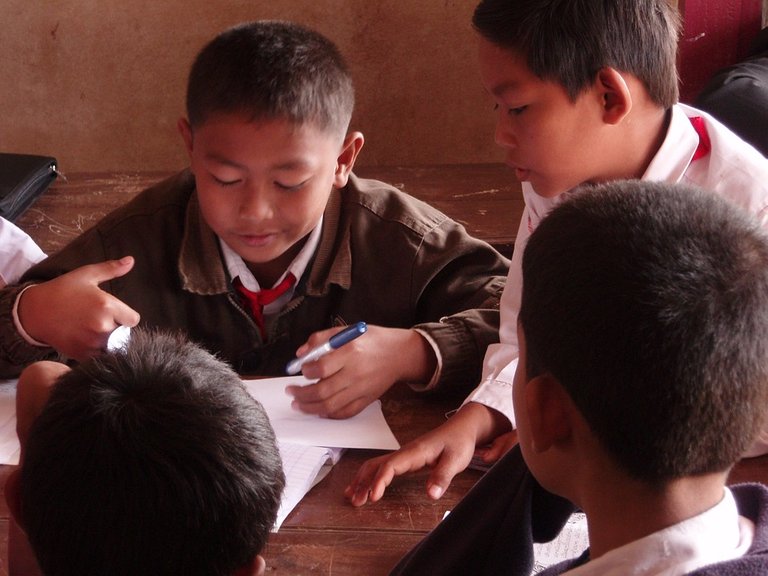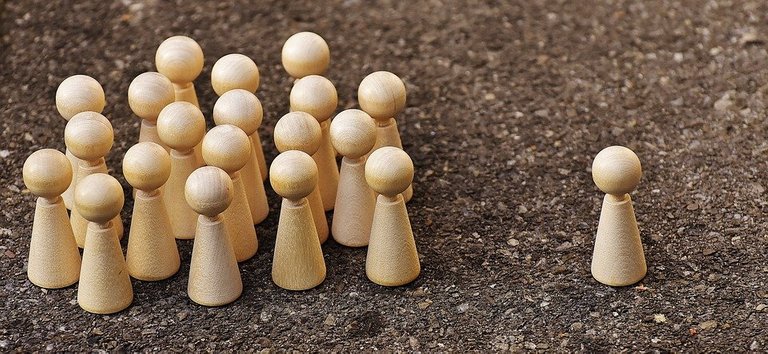
One day, I asked the students.
"Who already understood this subject matter?" I pointed to the board. Some students raised their hands.
Then I asked again, "Who has not understood this subject matter?" Several other students raised their hands.
"Well, for students who have not understood this subject matter, please ask to the students who understand it."
The children laughed. But I said seriously. Then I formed groups. I identified how many students have understood the subject matter and who have not understood it. I wanted students to be tutors of their peers. In this case, I used peer teaching methods in the classroom.
What is peer teaching?
Peer teaching is not a new concept. It can be traced back to Aristotle’s use of archons, or student leaders, and to the letters of Seneca the Younger. It was first organized as a theory by Scotsman Andrew Bell in 1795, and later implemented into French and English schools in the 19th century. Over the past 30-40 years, peer teaching has become increasingly popular in conjunction with mixed ability grouping in K-12 public schools and an interest in more financially efficient methods of teaching. Peer teaching is a method by which one student instructs another student in material on which the first is an expert and the second is a novice.[1] In short, peer teaching occurs when students, by design, teach other students.[2]
Peer teaching strategies can be a fun lesson in the classroom. Students are free to express and not haunted by fear when wrong in asking or answering questions. Learning at peers is very different when it comes to teachers who are different age away from children. They are sometimes reluctant, or if there are children mental weakness will be haunted by the fear of his teacher.
Peer teaching involves one or more students teaching other students in a particular subject area and builds on the belief that “to teach is to learn twice" (Whitman, 1998). Peer teaching can enhance learning by enabling learners to take responsibility for reviewing, organizing, and consolidating existing knowledge and material; understanding its basic structure; filling in the gaps; finding additional meanings; and reformulating knowledge into new conceptual frameworks’ (Dueck, 1993).[2]

However, in practice, the children involved in peer teaching still feel nervous. To cope, I would usually place these children into groups whose children are more familiar to them. It takes time. But for me, the issue of time is not the main thing. What I hope is that all children can understand the subject matter with a variety of methods. Learning method is an important factor. I will not use the same method in the class. I will move on to several methods depending on the situation and condition of my students.
The main benefits of peer teaching include, but are not limited to, the following:
- Students receive more time for individualized learning.
- Direct interaction between students promotes active learning.
- Peer teachers reinforce their own learning by instructing others.
- Students feel more comfortable and open when interacting with a peer.
- Peers and students share a similar discourse, allowing for greater understanding.
- Teachers receive more time to focus on the next lesson.[1]
However, the greater benefit I gain here is that students engage in direct interaction between students thus encouraging active learning. In addition, when students have gathered in one study group, they can discuss and share experiences. After the students play this role (teacher and student), I will evaluate this peer teaching method.
For me, peer teaching method is almost the same as group discussion. But what distinguishes here is that students who play the role of teachers can take full control of their peers. In my understanding, they are also entitled to assess their peers.
At the end of this article, I cited from this source about the advantages of peer teaching.
Help from peers increases learning both for the students being helped as well as for those giving the help. For the students being helped, the assistance from their peers enables them to move away from dependence on teachers and gain more opportunities to enhance their learning. For the students giving the help, the cooperative learning groups serve as opportunities to increase their own performance. They have the chance to experience and learn that "teaching is the best teacher" (Farivar and Webb, 1994).[2]
That is what I repeatedly reiterate to my students, "teaching is the best teacher".
References
[1] Saga Briggs, How Peer Teaching Improves Student Learning and 10 Ways to Encourage It, source https://www.opencolleges.edu.au/informed/features/peer-teaching/
[2] https://www.teachthought.com/pedagogy/the-definition-of-peer-teaching-a-summary-of-existing-research/
I was just thinking that teaching is a good way for the students to learn and then the last thing that you said was "teaching is the best teacher". I like how that worked out.
Learning and teaching is a cycle that keeps on turning. Someone needs to learn, and someone will also teach those who need it.
Bisa masukin jurnal ni artikelnya.
Iya, Bang. Tapi ini agak pendek. Kami pun tidak ada jurnal khusus di lembaga. Kalau masuk kampus, kayaknya agak sulit ya.
Masuk dalam jurnal steemiteducation juga sudah syukur. Hehe.
Bisa jurnal kami di Komunikasi. Tapi konteknya ke proses komunikasi guru dan siswa. Boleh lah....
Wah, kayaknya menarik juga nih. Sekalian ngumpul kredit. Ada website yang mungkin bisa saya pelajari?
Saya lupa. Nanti saya kabari lagi.
I like the way you teach. And we can also see students who can not yet. So we can explain again. Learning groups are also very supportive of students in learning. Continue to complete all your school students. thank you for sharing this post too.
I'm not sure of myself. I'm still weak in some methods, maybe. But I enjoy the processes I do in class. Thank you!
peer teaching apa hampir sama dengan metode belajar kelompok ?
Serupa tapi tak sama. Di sini, siswa yang berperan sebagai guru memegang kendali dalam proses ini. Diskusi kelompok, mencari solusi dalam suatu permasalahan.
Nice post bro, sangat menginspirasi !!!
Peace, Abundance, and Liberty Network (PALnet) Discord Channel. It's a completely public and open space to all members of the Steemit community who voluntarily choose to be there.Congratulations! This post has been upvoted from the communal account, @minnowsupport, by teukumukhlis from the Minnow Support Project. It's a witness project run by aggroed, ausbitbank, teamsteem, theprophet0, someguy123, neoxian, followbtcnews/crimsonclad, and netuoso. The goal is to help Steemit grow by supporting Minnows and creating a social network. Please find us in the
This post has received a 0.52 % upvote from @drotto thanks to: @banjo.
Saya senang membaca artikel-artikel bapak di steemiteducation, Banyak informasi dan solusi yang saya dapat disana, walaupun harus saya terjemahkan dahulu ke dalam bahasa indonesia.Terimakasih sudah berbagi.
Terima kasih